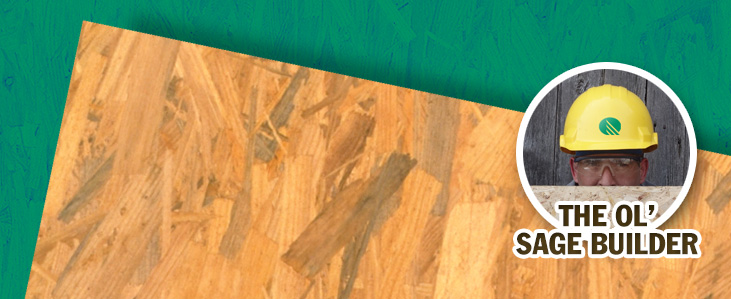
A question I often get asked when speaking with consumers is: “Do I use the wax side or the other side of OSB?” I always answer the question with this explanation:
Depending on the type of resin being used, some OSB producers do use wax but the wax has nothing to do with the appearance of the board. Powder resin systems use very small amounts of wax to help the resin powder stick to the surface of the strand until it goes into the press. The wax in OSB is typically only about 1% of the content of the panel and is distributed throughout the entire panel and is not applied to either face of the panel.
Then I get this question: “So why is one side smoother than the other and looks like it has a layer of wax?” Because OSB is an engineered structural panel, manufacturing OSB not only requires very special equipment but knowledge and experience as well. Here is the short version of how OSB is made:
- Small diameter logs not suitable for lumber are used to produce OSB (saw dust or waste material cannot be used).
- The bark is removed and used in the mill’s energy systems (100% of the log is used).
- After the bark is removed the logs are put through a “strander” that converts them to strands generally 1 ½” to 5” in length.
- The strands are then dried to a moisture content of approximately 2% – 4%.
- After drying to the proper moisture level, the strands move to the “blender” where resin is added and if powder resins are used, the wax is mixed in here.
- From the blender the strands move to a forming line where “orienters” lay the strands on large screens in such a way that the grain direction of the two faces are parallel and the core is perpendicular to the faces (similar to plywood).
- The purpose of the screens is to give one face a rougher surface to provide better foot traction for roof applications.
- These large mats are moved into a press and put under pressure in excess of 600psi at temperatures in excess of 400°F (approx 4” of wood strands are required to produce a panel 7/16” thick”).
- The screen is only needed on one side of the panel and the high pressure in the press makes the other face so smooth it just looks like it has been waxed.
- After leaving the press the mats move to the finishing line where they are cut to the correct size and stacked. The edge seal is applied and banded before moving to the storage area to cool for up to 48 hours before shipping.
The APA (The Engineered Wood Assoc) says that the same thicknesses of OSB and Plywood are equal in strength and span ratings are determined on strength and not thickness.
